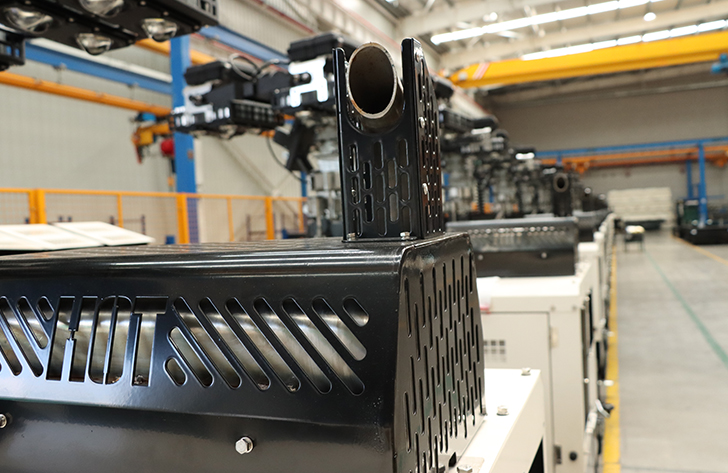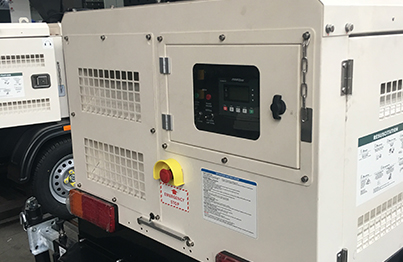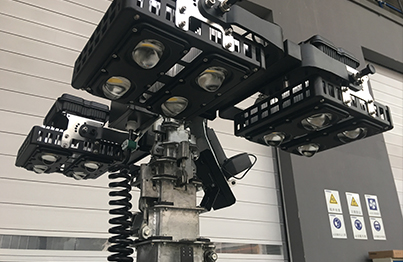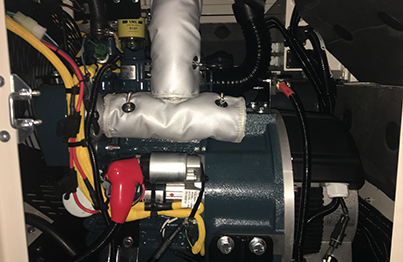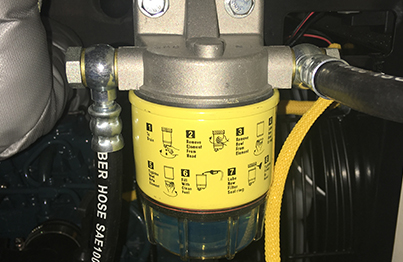Is there still demand for Diesel Lighting Towers?
Oct 19,2025
In the world of construction, events, and industrial projects, lighting towers play an essential role in ensuring visibility and safety during nighttime operations.
For many years, diesel-powered lighting towers were the go-to solution due to their power, portability, and reliability. However, as environmental concerns rise and energy costs increase, new alternatives like solar hybrid lighting towers are gaining traction.
This has led many to question: Is there still a place for diesel lighting towers in today’s market?
In this article, we will examine the continued demand for diesel lighting towers, compare them to emerging solutions like solar hybrids, and explore the factors influencing the decision to choose one over the other.
The Role of Diesel Lighting Towers in Portable Illumination
Diesel lighting towers have long been recognized as the industry standard for portable illumination on construction sites, mining operations, emergency response areas, and events. These robust machines are powered by diesel engines, which provide a reliable and consistent power source for high-output lights.
One of the key advantages of diesel lighting towers is their independence from external power sources. In remote locations or during power outages, diesel-powered towers can generate their own energy without needing access to the grid.
This makes them invaluable for a wide range of applications, from large-scale construction projects in isolated areas to emergency situations where quick deployment of lighting is required.
Diesel lighting towers are also known for their durability and longevity. These machines are designed to withstand harsh conditions, including extreme weather, dust, and other environmental challenges.
They can provide continuous lighting for long periods, making them well-suited for 24-hour operations on construction sites or industrial plants that require round-the-clock illumination.
Additionally, diesel-powered units have a proven track record in providing high-intensity light, which is essential for large areas or high-risk work environments.
Whether it’s a construction site, an outdoor festival, or a mining operation, the power output of a diesel tower can light up vast areas, ensuring safety and visibility even in the most remote locations.
The Emergence of Solar Hybrid Lighting Towers
Despite the advantages of diesel lighting towers, there is an undeniable shift towards more sustainable and cost-effective lighting solutions. As global awareness of environmental sustainability and carbon emissions grows, there has been a clear demand for alternatives that reduce the environmental impact of traditional diesel-powered systems.
Enter solar hybrid lighting towers. These systems combine solar panels with battery storage and, in many cases, a diesel generator that acts as a backup power source.
Solar hybrid lighting towers leverage the power of the sun to reduce the need for fuel consumption. The solar panels charge the batteries during the day, which then power the lights at night. When sunlight is insufficient, the diesel engine kicks in to keep the lights operational.
The adoption of solar hybrid lighting towers is driven by several compelling factors:
Environmental Impact: As industries strive to lower their carbon footprint, solar hybrid systems offer a greener solution compared to traditional diesel-powered lighting towers. These systems significantly reduce carbon emissions by relying on solar energy for a large portion of their operation.
Cost Efficiency: While the initial investment for solar hybrid lighting towers can be higher than diesel-only models, the long-term cost savings are significant. With reduced fuel consumption and lower maintenance costs, these systems can lead to lower operational costs over time.
Regulatory Pressures: Many countries and regions are tightening regulations on emissions and noise levels. For instance, in Europe, several cities have introduced strict emission standards for diesel-powered machines. Solar hybrid lighting towers help companies comply with these regulations without sacrificing performance.
Quiet Operation: Diesel lighting towers can be noisy, which might be a concern for certain projects, such as events or residential areas. Solar hybrid systems, on the other hand, operate with minimal noise when running on solar power, making them more suitable for sensitive environments..
Diesel vs. Solar Hybrid Lighting Towers
Performance & Reliability
While solar hybrid systems offer sustainability and cost savings, diesel lighting towers still excel in performance and reliability in challenging environments.
Diesel-powered units can deliver high-intensity lighting and can run continuously without worrying about weather conditions, battery life, or sunlight. In extremely remote areas or during emergencies, diesel-powered units provide unmatched dependability.
In contrast, solar hybrid towers rely on solar energy, which may not be as reliable in areas that experience prolonged periods of cloudy weather, or during the night when charging is not possible. Battery capacity can also limit the operational time, although the diesel backup ensures continuous operation.
Cost Analysis
Diesel lighting towers typically have a lower initial purchase cost compared to solar hybrid systems. However, their operational costs are higher due to ongoing fuel consumption and regular maintenance. Diesel engines also require more frequent servicing, which can increase maintenance costs over the lifespan of the equipment.
Solar hybrid systems, while more expensive upfront, can offer significant savings over time. By reducing reliance on fuel, these systems lower the long-term fuel expenses.
Additionally, because hybrid systems are less reliant on the diesel engine, they require less maintenance, leading to further cost reductions. In some cases, solar hybrid towers may be more expensive upfront, but the reduction in fuel and maintenance costs could make them a more cost-effective option in the long run.
Environmental Considerations
From an environmental perspective, solar hybrid lighting towers are clearly the better choice. They reduce the consumption of fossil fuels and decrease carbon emissions, helping organizations meet sustainability goals and environmental regulations. On the other hand, diesel lighting towers continue to contribute to air pollution and greenhouse gas emissions, although they are improving with more fuel-efficient designs and cleaner engines.
Portability & Convenience
Both types of lighting towers are portable and designed for ease of transport. Diesel-powered towers are often more robust, and their operational efficiency isn’t affected by cloudy weather or lack of sunlight, which makes them more dependable for long-term use in isolated locations.
Solar hybrid lighting towers, while more compact in some cases, may require sun exposure for optimal performance, making them less ideal in locations with limited sunlight.
Why Diesel Lighting Towers Are Still in Demand?
Despite the growing popularity of solar hybrid lighting towers, diesel-powered models are still in demand, particularly in regions where access to solar power is limited or where the infrastructure for charging solar units does not exist.
Diesel units also remain the preferred choice for high-power applications, such as large-scale construction sites, mining operations, and emergency lighting, where uninterrupted light is crucial.
Another reason for continued demand is the simplicity and reliability of diesel technology. Diesel lighting towers have been around for decades, and their ability to deliver consistent power with minimal technical issues is well-established. Additionally, parts availability and ease of maintenance contribute to their long-lasting appeal in certain industries.
The Futureof Lighting Towers
The future of lighting towers seems to be headed toward hybrid systems, with an increasing shift towards sustainability and lower operational costs. However, the diesel lighting tower is far from obsolete.
In many cases, these units will continue to be a critical part of operations, especially for industries that require high-intensity lighting and dependable performance under challenging conditions.
As solar technology continues to improve and battery storage systems become more efficient, we may see more widespread adoption of solar hybrid models across all sectors.
Nevertheless, diesel-powered lighting towers will likely continue to coexist with solar hybrid solutions, offering a more comprehensive range of options to meet the diverse needs of the construction and industrial sectors.
Conclusion
Diesel lighting towers remain in high demand, particularly for industries that rely on providing powerful, reliable, and continuous lighting in remote or harsh environments.
However, growing environmental concerns and the emergence of more sustainable alternatives are driving a shift toward solar hybrid lighting towers.
These systems offer significant environmental benefits, cost savings, and regulatory advantages, making them a strong contender in the lighting tower market.
As technology continues to evolve, we’re likely to see further convergence of diesel and solar hybrid lighting solutions, providing more efficient and sustainable lighting options for a wide range of industries.
--- END ---
Prev: Reliable Backup Power with the ABS Hybrid Energy System
Already the latest article

